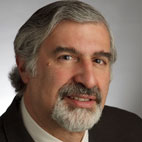 This lecture was presented as part of The Long Now Foundation’s monthly Seminars About Long-term Thinking.
This lecture was presented as part of The Long Now Foundation’s monthly Seminars About Long-term Thinking.
American History in 101 Objects
Monday November 18, 02013 – San Francisco
Video is up on the Kurin Seminar page for Members in HD and non-Members in SD.
*********************
Audio is up on the Kurin Seminar page, or you can subscribe to our podcast.
*********************
American objects – a summary by Stewart Brand
Figuratively holding up one museum item after another, Kurin spun tales from them. (The Smithsonian has 137 million objects; he displayed just thirty or so.)
The Burgess Shale shows fossilized soft-tissue creatures (“very early North Americans”) from 500 million years ago. The Smithsonian’s Giant Magellan Telescope being built in Chile will, when it is completed in 2020, look farther into the universe, and thus farther into the past than any previous telescope—12.8 billion years.
Kurin showed two versions of a portrait of Pocahontas, one later than the other. “You’re always interrogating the objects,” he noted. In the early image Pocahontas looks dark and Indian; in the later one she looks white and English.
George Washington’s uniform is elegant and impressive. He designed it himself to give exactly that impression, so the British would know they were fighting equals.
Benjamin Franklin’s walking stick was given to him by the French, who adored his fur cap because it seemed to embody how Americans lived close to nature. The gold top of the stick depicted his fur cap as a “cap of liberty.” Kurin observed, “There you have the spirit of America coded in an object.”
In 1831 the first locomotive in America, the “John Bull,” was assembled from parts sent from England and took up service from New York to Philadelphia at 15 miles per hour. In 1981, the Smithsonian fired up the John Bull and ran it again along old Georgetown rails. It is viewed by 5 million visitors a year at the American History Museum on the Mall.
The Morse-Vail Telegraph from 1844 originally printed the Morse code messages on paper, but that was abandoned when operators realized they could decode the dots and dashes by ear. In the 1840s Secretary of the Smithsonian Joseph Henry collected weather data by telegraph from 600 “citizen scientists” to create: 1) the first weather maps, 2) the first storm warning system, 3) the first use of crowd-sourcing. The National Weather Service resulted.
Abraham Lincoln was 6 foot 4 inches. His stylish top hat made him a target on battlefields. It had a black band as a permanent sign of mourning for his son Willie, dead at 11. He wore the hat to Ford’s Theater on April 14, 1865. When you hold the hat, Kurin said, “you feel the man.”
In 1886 the Smithsonian’s taxidermist William Temple Hornaday brought one of the few remaining American bison back from Montana to a lawn by the Mall and began a breeding program that eventually grew into The National Zoo. His book, The Extermination of the American Bison, is “considered today the first important book of the American conservation movement.”
Dorothy’s magic slippers in The Wizard of Oz are silver in the book but were ruby in the movie (and at the museum) to show off the brand-new Technicolor. The Smithsonian chronicles the advance of technology and also employs it. The next Smithsonian building to open in Washington, near the White House, will feature digital-projection walls, so that every few minutes it is a museum of something else.
Subscribe to our Seminar email list for updates and summaries.